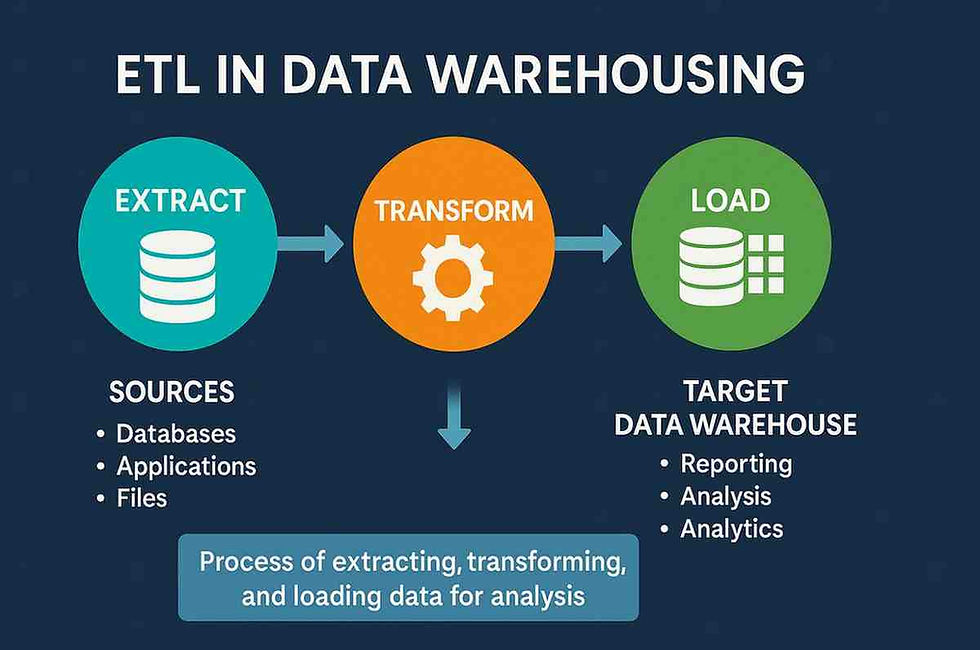Alpha Testing and Beta Testing: Guide for Software Success
- Gunashree RS
- Jul 22
- 7 min read
Software development is a complex journey that requires multiple checkpoints to ensure quality, functionality, and user satisfaction. Among the most critical phases in this journey are alpha testing and beta testing—two essential stages that can make or break your product's success in the market.
Understanding these testing methodologies isn't just about following industry standards; it's about creating software that truly meets user expectations while minimizing post-launch issues. Whether you're a developer, project manager, or quality assurance professional, mastering alpha and beta testing will significantly improve your software's reliability and market acceptance.

Understanding Alpha Testing: Your First Line of Defense
Alpha testing is the initial phase of testing performed on a software application before it is released to a larger audience or undergoes beta testing. This internal testing phase serves as your software's first real-world examination, conducted within your development environment by your own team members.
Think of alpha testing as your dress rehearsal before the main performance. During this phase, developers and internal testers rigorously examine every feature, function, and user interaction to identify potential issues before external users ever see the product.
Key Characteristics of Alpha Testing
Alpha testing typically occurs in a controlled environment that mimics real-world conditions as closely as possible. It is like the last line of defense to catch critical issues before the software is released. The testing team uses synthetic data sets and follows predetermined test scenarios to evaluate the software's performance comprehensively.
The process involves intensive debugging sessions where testers document every bug, glitch, or unexpected behavior they encounter. This methodical approach ensures that major functionality issues are resolved before moving to the next testing phase.
Beta Testing: Real-World Validation
Beta Testing is performed by real users of the software application in a real environment. Unlike alpha testing's controlled setting, beta testing introduces your software to actual end-users who will interact with it in unpredictable ways, using various devices, operating systems, and network conditions.
Beta testing represents the bridge between development and full market release. It provides invaluable insights into how your software performs in diverse, uncontrolled environments while gathering authentic user feedback about functionality, usability, and overall experience.
The Beta Testing Advantage
According to 2024 data, beta-tested software shows 50% fewer compatibility issues after launch. This statistic highlights the tremendous value that beta testing brings to software development cycles. Real users often discover edge cases and usage patterns that internal testing teams might never consider.
Beta testers typically include potential customers, industry experts, or members of the public who volunteer to test pre-release versions. Their feedback often reveals usability issues, performance bottlenecks, and feature gaps that weren't apparent during internal testing.
Critical Differences Between Alpha and Beta Testing
Understanding the distinctions between these testing phases helps you implement each one effectively and maximize their benefits for your software development process.
Environment and Location
Alpha Testing is done within the organization, while Beta Testing is done in the user's environment. This fundamental difference affects everything from test data to user behavior patterns.
Alpha testing occurs in laboratory-like conditions where variables can be controlled and monitored. Beta testing happens in the wild, where users employ the software on their own devices, networks, and according to their personal workflows.
Participant Demographics
Alpha Testing is performed by the Testers within the organization, whereas Beta Testing is performed by the end users. Internal testers bring technical expertise and systematic approaches, while external beta testers contribute authentic user perspectives and real-world usage scenarios.
Testing Scope and Focus
During Alpha Testing, only functionality and usability are tested, while during Beta Testing, usability, functionality, security, and reliability are tested to the same depth. Alpha testing concentrates on core features and basic user experience, whereas beta testing examines the complete user journey, including security vulnerabilities and system reliability under various conditions.
Strategic Implementation of Alpha Testing
Successful alpha testing requires careful planning and systematic execution. Here's how to maximize the effectiveness of your alpha testing phase:
Planning Your Alpha Testing Strategy
Define Clear Objectives: Establish specific goals for what you want to accomplish during alpha testing.
Assemble the Right Team: Include developers, quality assurance specialists, and user experience designers.
Create Comprehensive Test Scenarios: Develop test cases that cover all major features and user workflows.
Establish Bug Tracking Systems: Implement robust systems for documenting, prioritizing, and resolving issues.
Alpha Testing Best Practices
Use Synthetic Data Sets: Alpha testing data sets typically use data that is not real, or synthetic data, to protect sensitive information while still providing realistic testing scenarios.
Focus on Core Functionality: Prioritize testing essential features before moving to secondary functions.
Document Everything: Maintain detailed records of all issues, solutions, and test results
Iterative Improvement: Conduct multiple alpha testing cycles to address issues systematically
Maximizing Beta Testing Success
Beta testing requires different strategies and considerations compared to alpha testing, given its external nature and real-world environment.
Building Your Beta Testing Program
Recruit Diverse Beta Testers: Include users from different demographic groups, technical backgrounds, and use cases.
Provide Clear Instructions: Offer comprehensive guidance on testing objectives and feedback requirements.
Create Feedback Channels: Establish easy-to-use systems for collecting and organizing user feedback.
Set Realistic Timelines: Beta testing typically takes a few weeks, so plan accordingly.
Beta Testing Excellence Strategies
Monitor Multiple Environments: Beta testing verifies your software's performance in diverse environments across different devices and systems.
Gather Comprehensive Feedback: Collect information about functionality, usability, performance, and user satisfaction.
Analyze Usage Patterns: Study how beta testers actually use your software versus how you intended it to be used.
Prioritize Critical Issues: Focus on resolving problems that significantly impact user experience or functionality.
Timeline and Duration Considerations
Long execution cycles may be needed for Alpha Testing, while just a few weeks of execution make Beta Testing possible. This timing difference reflects the different objectives and methodologies of each testing phase.
Alpha testing often requires multiple iterations and thorough debugging sessions, which can extend the timeline considerably. Beta testing, while potentially involving more participants, typically focuses on validation rather than extensive problem-solving, allowing for shorter cycles.
Benefits and Return on Investment
Alpha Testing Benefits
Early Issue Detection: Identify critical problems before they reach external users
Cost Reduction: Fix issues during development rather than after release
Quality Assurance: Ensure core functionality meets design specifications
Risk Mitigation: Reduce the likelihood of major post-launch problems
Beta Testing Benefits
Real-World Validation: Test software under authentic usage conditions
User Experience Insights: Gather feedback from actual target users
Market Readiness Assessment: Evaluate whether the product is ready for full release
Compatibility Verification: Ensure the software works across various environments and systems
Integration with Development Workflows
Both alpha and beta testing should integrate seamlessly with your overall development and release management processes. Both testing phases are crucial for a smooth release management process.
Consider implementing continuous integration practices that automatically trigger alpha testing protocols when new features are completed. Similarly, establish clear criteria for transitioning from alpha to beta testing phases.
Frequently Asked Questions
What is the main difference between alpha and beta testing?
Alpha testing is done internally, before the product release; meanwhile, beta testing is done externally, after the product release. Alpha testing focuses on internal validation, while beta testing provides external user validation.
Who performs alpha and beta testing?
Alpha Testing happens in the early stages of SDLC and is performed internally by the development team, while Beta testing happens later in the SDLC, just before product release, and is performed by potential customers, industry experts, or public beta testers.
How long does each testing phase typically take?
Alpha testing involves a long process with detailed steps, while beta testing typically takes a few weeks. The exact duration depends on software complexity and issue severity.
Can we skip alpha testing and go directly to beta testing?
While technically possible, skipping alpha testing is not recommended as it increases the risk of releasing software with critical issues to external users, potentially damaging your reputation and user trust.
What types of bugs are typically found in each phase?
Alpha testing commonly identifies functionality bugs, integration issues, and user interface problems. Beta testing often reveals compatibility issues, performance bottlenecks, and usability concerns in real-world scenarios.
How many beta testers should we recruit?
The optimal number varies based on your target market size, software complexity, and available resources. Generally, 50-100 engaged beta testers provide sufficient feedback for most applications.
What happens after beta testing is complete?
After analyzing beta testing feedback and resolving critical issues, teams typically prepare for the production release, incorporating lessons learned from both testing phases.
How do we measure the success of our testing phases?
Success metrics include bug detection rates, user satisfaction scores, performance benchmarks, and the number of post-launch issues compared to pre-testing baselines.
Conclusion
Alpha testing and beta testing represent crucial phases in software development that significantly impact your product's success. Alpha testing is performed internally to catch major bugs, while beta testing involves real users to ensure the software meets their expectations in real-world scenarios.
By implementing comprehensive alpha and beta testing strategies, you create multiple opportunities to identify and resolve issues before they impact your end users. This proactive approach not only improves software quality but also enhances user satisfaction and reduces post-launch support costs.
Remember that both testing phases serve different but complementary purposes in your development workflow. Alpha testing validates your technical implementation, while beta testing confirms market readiness and user acceptance. Together, they form a powerful quality assurance framework that increases your software's chances of market success.
Key Takeaways
• Alpha testing occurs internally before beta testing and focuses on functionality and usability validation in controlled environments
• Beta testing involves real users in authentic environments, providing valuable feedback on real-world performance and user experience
• Timing differs significantly between phases, with alpha testing requiring longer cycles for thorough debugging while beta testing typically completes within weeks
• Different skill sets are required for each phase, with technical testers for alpha and diverse end-users for beta testing
• Both phases are essential for successful software launches and cannot be effectively substituted for one another
• Cost savings are substantial when issues are identified and resolved during testing rather than after public release
• Success metrics should be established for both phases to measure effectiveness and guide future testing improvements
• Integration with development workflows ensures testing phases complement rather than disrupt overall project timelines
• Beta-tested software demonstrates 50% fewer compatibility issues after launch compared to software that skips this phase
• Comprehensive documentation during both phases creates valuable resources for future development and maintenance efforts




Understanding these testing methodologies isn't just about following industry standards; it's about creating software that truly meets user expectations while minimizing post-launch issues cleanpwr
INDOVIP138
indovip138
indovip138
indovip138
indovip138
indovip138
indovip138
indovip138
indovip138
indovip138
indovip138
indovip138
indovip138
indovip138
indovip138
indovip138
indovip138
indovip138
indovip138
indovip138
indovip138
indovip138
indovip138
indovip138
indovip138
indovip138
indovip138
indovip138
indovip138
indovip138
indovip138
indovip138
indovip138
indovip138
indovip138
indovip138
indovip138
indovip138
indovip138
indovip138
indovip138
indovip138
indovip138
indovip138
indovip138
Link INDOVIP138
indovip138
indovip138
indovip138
indovip138
indovip138
indovip138
indovip138
indovip138
indovip138
indovip138
indovip138
indovip138
indovip138
indovip138
indovip138
indovip138
indovip138
indovip138
indovip138
indovip138
indovip138
indovip138
indovip138
indovip138
indovip138
indovip138
indovip138
indovip138
indovip138
indovip138
indovip138
indovip138
PAUTOTO
PAUTOTO
PAUTOTO
PAUTOTO
PAUTOTO
SUPTOGEL
SUPTOGEL
SUPTOGEL
SUPTOGEL
SUPTOGEL
BANTOGEL
BANTOGEL
BANTOGEL
BANTOGEL
BANTOGEL
GUATOGEL
GUATOGEL
GUATOGEL
GUATOGEL
GUATOGEL
LAMTOTO
LAMTOTO
LAMTOTO
LAMTOTO
LAMTOTO
LPG888
RAPTOTO
SlotGacorGuide
SlotGacorGuide